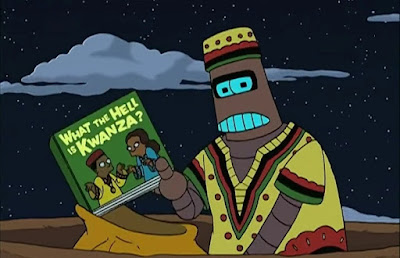Kwanzaa
Created by activist Maulana Karenga, based on African harvest festivals, it was first celebrated in 1966. The name derives from the Swahili phrase, "matunda ya kwanza," meaning "first fruits." The goal was to give black people an opportunity to celebrate themselves and their history.
The Seven Principles, or Nguzo Saba:
Unity (Umoja)
Self-Determination (Kujichagulia)
Collective Work and Responsibility (Ujima)
Cooperative Economics (Ujamaa)
Purpose (Nia)
Creativity (Kuumba)
Faith (Imani) - To believe with all our hearts in our people, our parents, our teachers, our leaders, and the righteousness and victory of our struggle.
Kwanzaa lasts for seven days, and one of the symbols is a candle holder, called a Kinara. The candles are called Mishumaa Saba - one black, three green, and three red.
For the first time ever, Philadelphia will light an official kinara.
On the sixth day, there is a communal feast called Karamu. The largest gathering was held in Chicago in 1992.
In 1997, President Bill Clinton was the first to make a declaration marking the holiday.
It is estimated that about 12.5 million Americans celebrate Kwanzaa. For many, it isn't a replacement for Christmas, but an expansion. It was born out of the Black Power movement though, so initially was more at odds with the (White) Christian holiday.





Comments
Post a Comment